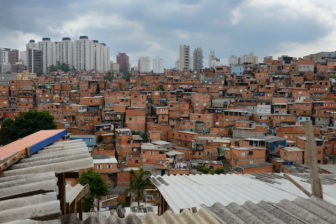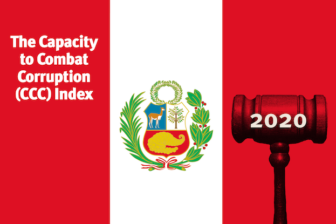Peru was praised early on in the pandemic for its swift and decisive response, buffered by an enviable fiscal cushion. But four months later, the government’s disjointed execution of its strategy has made the country a cautionary tale for how not to fight COVID-19.
Back on March 15, nine days after the first reported coronavirus case in the country, Peru’s government imposed a strict lockdown that is only now being eased. A few days later, a fiscal package of more than 10% of GDP was announced, including cash transfers to the poorest third of the population, credit support for businesses and, most importantly, expanded funding to the health sector.
The country was supposed to be able to finance these actions without the kind of financial stress that other countries have had to face. Peru’s growth and stability has been one of the brightest spots in the world economy for more than a quarter century. It has ample access to global credit markets, and a level of international reserves that exceeds one third of its GDP. It is hard to think of another country in a better position at the start of the pandemic.
And yet, Peru’s record on dealing with the pandemic has not only been disappointing – it is among the worst in the world.
In a study of 21 countries, the Financial Times identified Peru as the one with the highest share of excess deaths. The New York Times, meanwhile, reported that Peru’s supply of oxygen may only be one fifth of what the country needs for patients. These facts represent an utter failure of public policy, especially given that they have occurred with no offsetting benefit in terms of economic activity: The World Bank forecasts that Peru’s GDP will drop by 12% in 2020, far more than the Latin American average of 7.3%
Understanding Peru’s debacle is essential to minimizing further damage and correcting the government’s strategy, and will help identify lessons for other emerging markets. Notably, access to international financing has not been a factor in mitigating the damage done by the virus. Not only has Peru received strong support from international financial institutions, but it has also remained a top destination for private capital: In mid-April, a $3 billion bond sale attracted more than $25 billion in orders. In other words, Peru’s government has hardly been short of money to combat the pandemic.
Instead, the bottlenecks have been domestic. While the government committed substantial funds to combating the pandemic, it implemented a top down strategy that failed to rally nongovernmental actors around the emergency. As a consequence, many prescriptions were not adequately designed to deal with Peru’s high degrees of informality and urban overcrowding. Not surprisingly, the population has been reluctant to comply with lockdown orders and other public health measures.
In addition, execution of the government’s pandemic strategy has been slow and plagued with inconsistencies. In one example, four months after the start of the quarantine, the health ministry had used less than one third of the funds assigned to it for COVID-19 purposes. In another, of more than 29,000 applications to a labor ministry scheme to help firms suspend operations and furlough workers, only 4,000 had been reviewed by the end of June – with just 450 applications approved.
These deficiencies are a painful demonstration that fast and sustained economic growth, as Peru has enjoyed in recent decades, does not automatically translate into a commensurate improvement of the capacity and quality of the government. But in Peru’s case, poor leadership and agenda setting, as well as deficient communication and lack of coordination across different government entities, have also played a role. This is regrettable but, at the same time, suggests that some policy alternatives remain available to improve matters in the coming months.
The key words are cooperation and coordination. Different parts of the government must coordinate actions and plans more closely. In particular, the finance ministry could and should assume more of a leadership role in guiding the health and labor ministries to execute their budgets within the accelerated time frame that the pandemic requires. Different ministries and government offices should also work together in identifying and dismantling unnecessary rules and regulations that impede rapid action in government procurement, especially in regard to the public health items urgently needed for the pandemic.
Cooperation between the government and the private sector is likewise crucial. The government should make a stronger effort to hear and learn from the private sector on how to minimize the impact of public health measures on economic activities. Stepping up the dialogue should result in more focused and effective strategies, especially as the country starts relaxing its initial lockdown and tries to return to a new normality.
There may already have been some progress on these fronts. President Martín Vizcarra just reshuffled his Cabinet, and the new prime minister, Pedro Cateriano, is a seasoned actor who has served in Congress and as a minister on two occasions. His presence may help coalesce the government around a more consistent, unified response.
As for public-private cooperation, Finance Minister María Antonieta Alva announced a series of steps on July 1 aimed at reducing excessive red tape and bureaucratic obstacles to mining projects. Notably, the announcement reflects an enhanced dialogue with several public and private actors, especially in the context of the so-called Executive Bureaus (Mesas Ejecutivas) created in 2018 to propose actions to increase productivity and competitiveness in mining. These developments are critical for Peru as, going forward, mining will remain a prime option to drive economic turnaround.
If Vizcarra seizes the moment and provides needed leadership in spite of predictable opposition and criticism on several fronts, including in Congress, Peru may yet see a turnaround. Some recent developments point in that direction. But quick progress is imperative if Peru is to be an example to follow, rather than a cautionary tale for the emerging world.
—
Chang is a Distinguished Professor of Economics at Rutgers University







